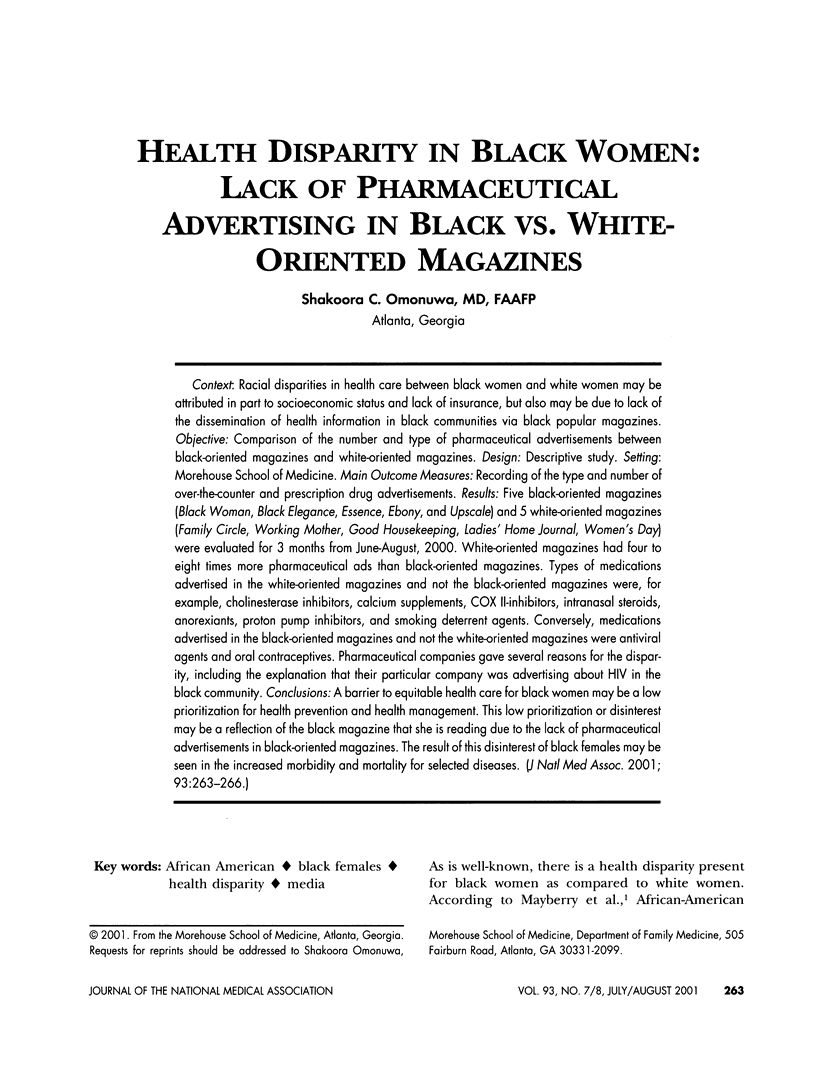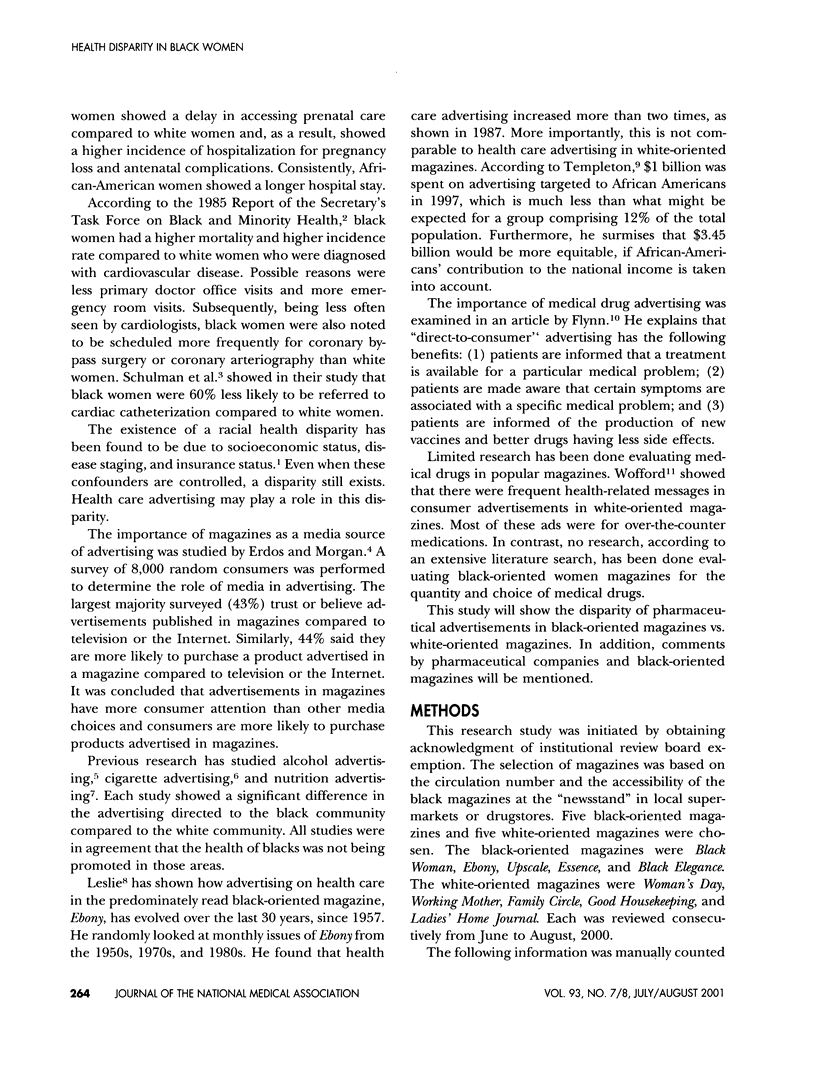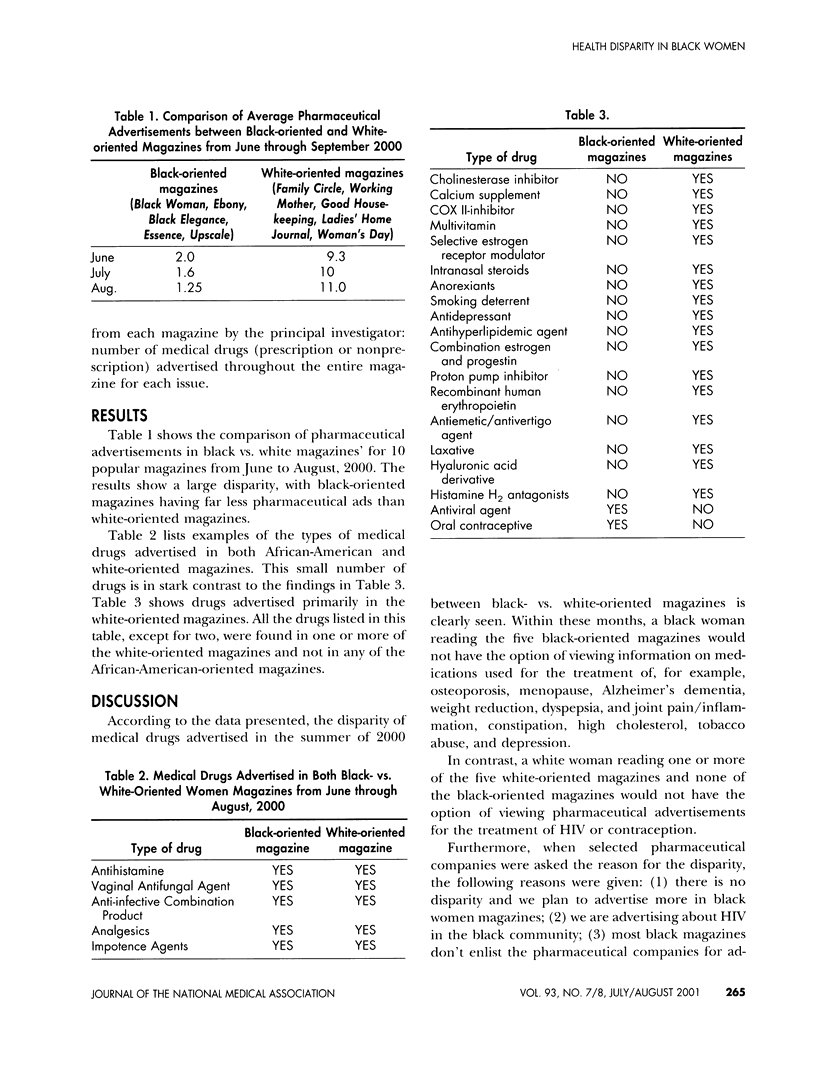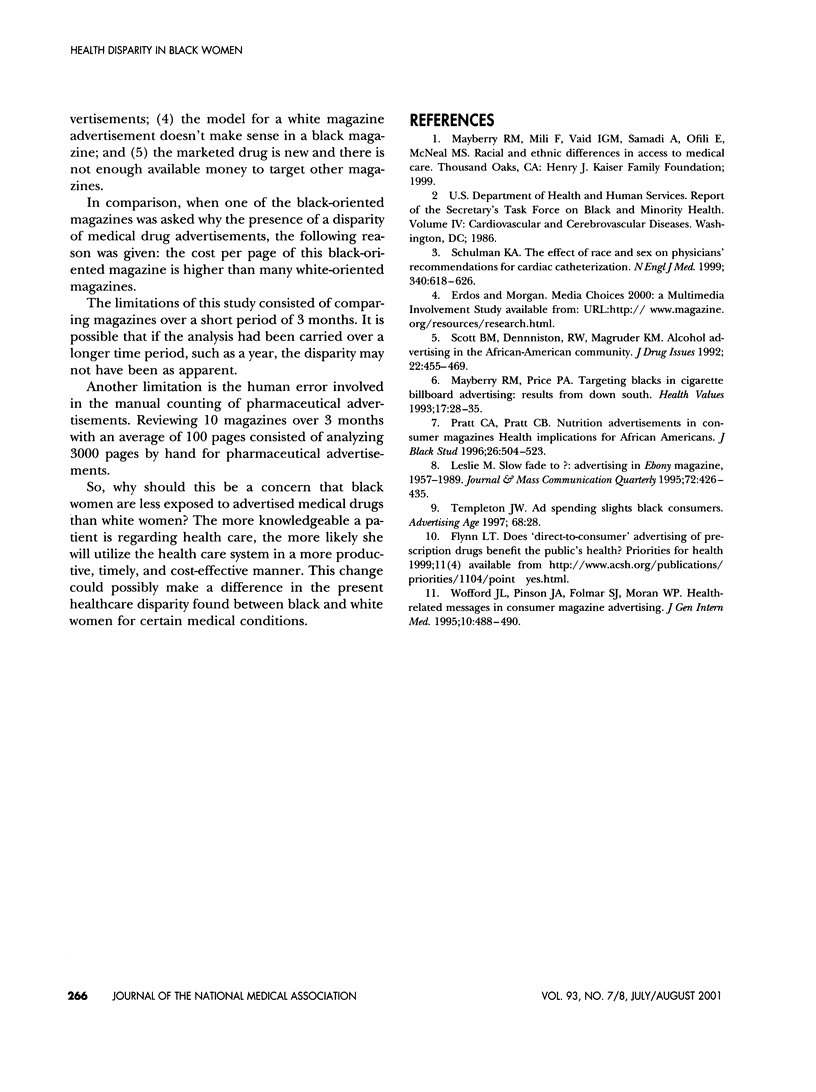Abstract
CONTEXT: Racial disparities in health care between black women and white women may be attributed in part to socioeconomic status and lack of insurance, but also may be due to lack of the dissemination of health information in black communities via black popular magazines. OBJECTIVE: Comparison of the number and type of pharmaceutical advertisements between black-oriented magazines and white-oriented magazines. DESIGN: Descriptive study. SETTING: Morehouse School of Medicine. MAIN OUTCOME MEASURES: Recording of the type and number of over-the-counter and prescription drug advertisements. RESULTS: Five black-oriented magazines (Black Woman, Black Elegance, Essence, Ebony, and Upscale) and 5 white-oriented magazines (Family Circle, Working Mother, Good Housekeeping, Ladies' Home Journal, Women's Day) were evaluated for 3 months from June-August, 2000. White-oriented magazines had four to eight times more pharmaceutical ads than black-oriented magazines. Types of medications advertised in the white-oriented magazines and not the black-oriented magazines were, for example, cholinesterase inhibitors, calcium supplements, COX II-inhibitors, intranasal steroids, anorexiants, proton pump inhibitors, and smoking deterrent agents. Conversely, medications advertised in the black-oriented magazines and not the white-oriented magazines were antiviral agents and oral contraceptives. Pharmaceutical companies gave several reasons for the disparity, including the explanation that their particular company was advertising about HIV in the black community. CONCLUSIONS: A barrier to equitable health care for black women may be a low prioritization for health prevention and health management. This low prioritization or disinterest may be a reflection of the black magazine that she is reading due to the lack of pharmaceutical advertisements in black-oriented magazines. The result of this disinterest of black females may be seen in the increased morbidity and mortality for selected diseases.
Full text
PDF



Selected References
These references are in PubMed. This may not be the complete list of references from this article.
- Schulman K. A., Berlin J. A., Harless W., Kerner J. F., Sistrunk S., Gersh B. J., Dubé R., Taleghani C. K., Burke J. E., Williams S. The effect of race and sex on physicians' recommendations for cardiac catheterization. N Engl J Med. 1999 Feb 25;340(8):618–626. doi: 10.1056/NEJM199902253400806. [DOI] [PubMed] [Google Scholar]
- Wofford J. L., Pinson J. A., Folmar S. J., Moran W. P. Health-related messages in consumer magazine advertising. J Gen Intern Med. 1995 Sep;10(9):488–490. doi: 10.1007/BF02602397. [DOI] [PubMed] [Google Scholar]


